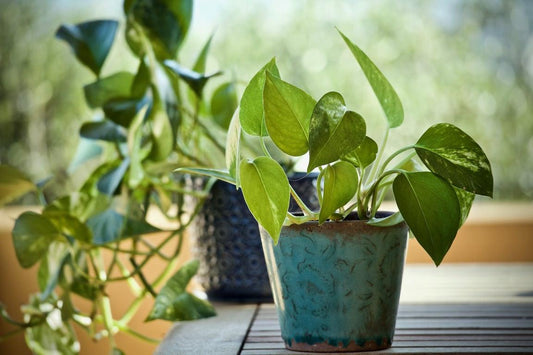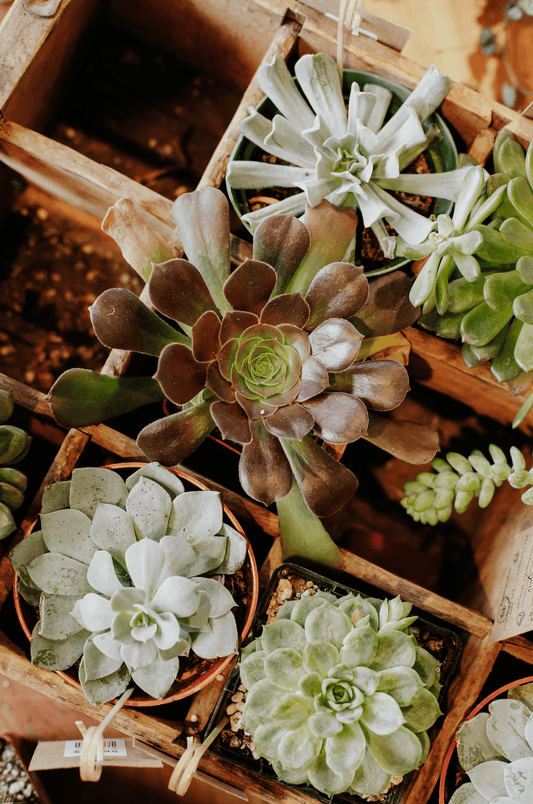FICUS
How to Care for the FICUS Plant
Overview
Grown as decorative plants, edible plants, and religious symbols, the Ficus is one of the most popular plants today. They bear the appearance of small trees, characterized by a single trunk and a spreading canopy of foliage. While relatively easy to grow and care for, they are also notorious for being a bit finicky. As long as they settle well in their new environment, and have their basic needs met, they grow into beautiful, happy plants.
Ficus can grow up to 6 feet high and 3 feet wide in an indoor setting, and up to 70 feet tall when planted outdoors. As tropical plants native to India and South Africa, Ficus plants like bright indirect light, high humidity, and consistent watering. They do not like drafty or cold spots, and get moody when moved around too much which will lead to leaf drop. They also have a tendency to be vulnerable to mites, mealybugs, and aphids.


Profile
To propagate, use cuttings with green growth at the tips, and woody bases. Place the cutting in water and wait for roots. Some varieties of Ficus propagate faster using the air layering method. Air layering is a method that allows you to propagate new plants from stems still attached to the parent plant. Instead of snipping it near a node, you leave it connected and attempt to grow roots while your future cutting is still a part of its mother plant. This method requires only one cut, avoiding significant damage to the rest of the plant should it not suceed.
How to Air Layer:
- Choose a one- to two-year-old stem in good health. Trim off side shoots and leaves. Remove the bark along the area for air layering using the ringing method.
- Prepare rooting hormone. This comes in both gel and powder form, with the former being easier to use as the latter requires you to make a paste prior to application.
- Apply the rooting hormone to the cut closest to the shoot tip.
- Use either garden soil, potting mix, or peat moss to wrap around the air layered section. Use a clear plastic sheet to hold the medium in place. Label with the date air layering was done.
- Check your air layered section regularly for drying or rooting. When sufficient roots have grown, you may now cut off the branch from the parent plant. Place in a pot.
Note that these plants are mildly toxic to both humans and pets. Its sap contains diterpenes, which is a skin irritant. Ingestion will cause mouth and stomach irritation.
In Buddhism, the famous Bodhi Tree—or the tree of awakening—was a Ficus Religiosa. Buddha was said to have achieved enlightenment underneath it.




Low light
Ficus plants need bright light, but not direct sunlight, as this will burn the leaves and cause them to drop. Native to the tropics, your plant will appreciate high humidity and regular misting. Misting will also help keep pests away. Your Ficus plant will do well in average room temperatures of 65-78°F, growing better in temperatures in the high 70s. Make sure to keep them away from cold drafts, and wipe their broad leaves down regularly to increase photosynthetic efficiency.

Occasional
Ficus’ should do great in any well-draining, soil-based potting mixes, but be mindful to avoid more acidic mixes. Water using filtered water when the top 85% of soil is dry. These plants require consistent watering to prevent brown rust-like staining on the leaves called edema.

Easy breezy
Ficus plants are quick growers, and they can easily outgrow their pots when healthy. To keep your plant at a manageable size, repot only once a year to every other year to slow growth. Prune regularly to maintain its shape, and to prevent it from growing too high.
FREQUENTLY ASKED QUESTIONS (FAQs)
on FICUS
Should I avoid moving my Ficus plant?
As much as possible, yes. It is easily stressed and stress = leaf drop. If you must, do so carefully and gradually.
Is the sap of my Ficus plant toxic?
When pruning your plant, a milky latex substance may leak out. This sap is mildly toxic. If it comes into contact with your skin, wash with warm water and soap immediately.




